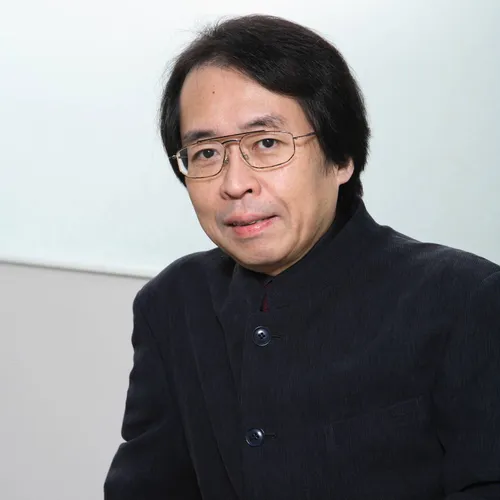
Just as flower buds open up into blooms when the time is ripe, so the world comes into resplendent bloom at each instant in the dizzying, never-ending process of birth that takes place within the space-time continuum enveloping human life. This is an image conveyed by the adage kakai-sekaiki (literally ‘the opening of flowers is the occurrence of the world’) quoted by the 13th-century Japanese Zen master Dōgen to express the oneness of phenomena and reality.
Although this image may not be entirely in keeping with Dōgen’s intended meaning, it channels light, joy and contentment into the human spirit as we confront the loneliness of the human condition in the face of life and death. In this particular work I have striven to give expression to my own subjective interpretation of kakai-sekaiki in the form of a work for orchestra.
The orchestration includes a group of eight players comprising five percussionists and players of the celesta, piano and harp. The percussion instruments are mainly metallic and include vibraphone, tubular bells, glockenspiel, antique cymbals, suspended cymbals and tam-tam.
This group represents the world as it continues to blossom, but at the same time it portrays the flow of water as the agent for the world’s blossoming as well as phenomena such as light, air and wind. It symbolises the fount of the world and assumes a variety of forms in the course of the work: static, dynamic, undulating and oscillating in trills. Distinctive sonic worlds formed by winds and strings emerge in succession from out of this fluid matrix, including abstract sound worlds incorporating harmonics and microtones, representational sound worlds accompanied by melody, and worlds formed by pulses and tremolos. Various modes are also incorporated with the aim of adding colour to the linked sound worlds as they appear in succession.
The work begins with an undulating sonic texture created by the group of eight players and chords on the strings consisting of harmonics. At the final stage of the work the cellos and double basses play a continuous low D and the violas a G#, while the violins are hoisted ever further up into the stratospheric pitch range to fade away into nothingness.
Akira Nishimura